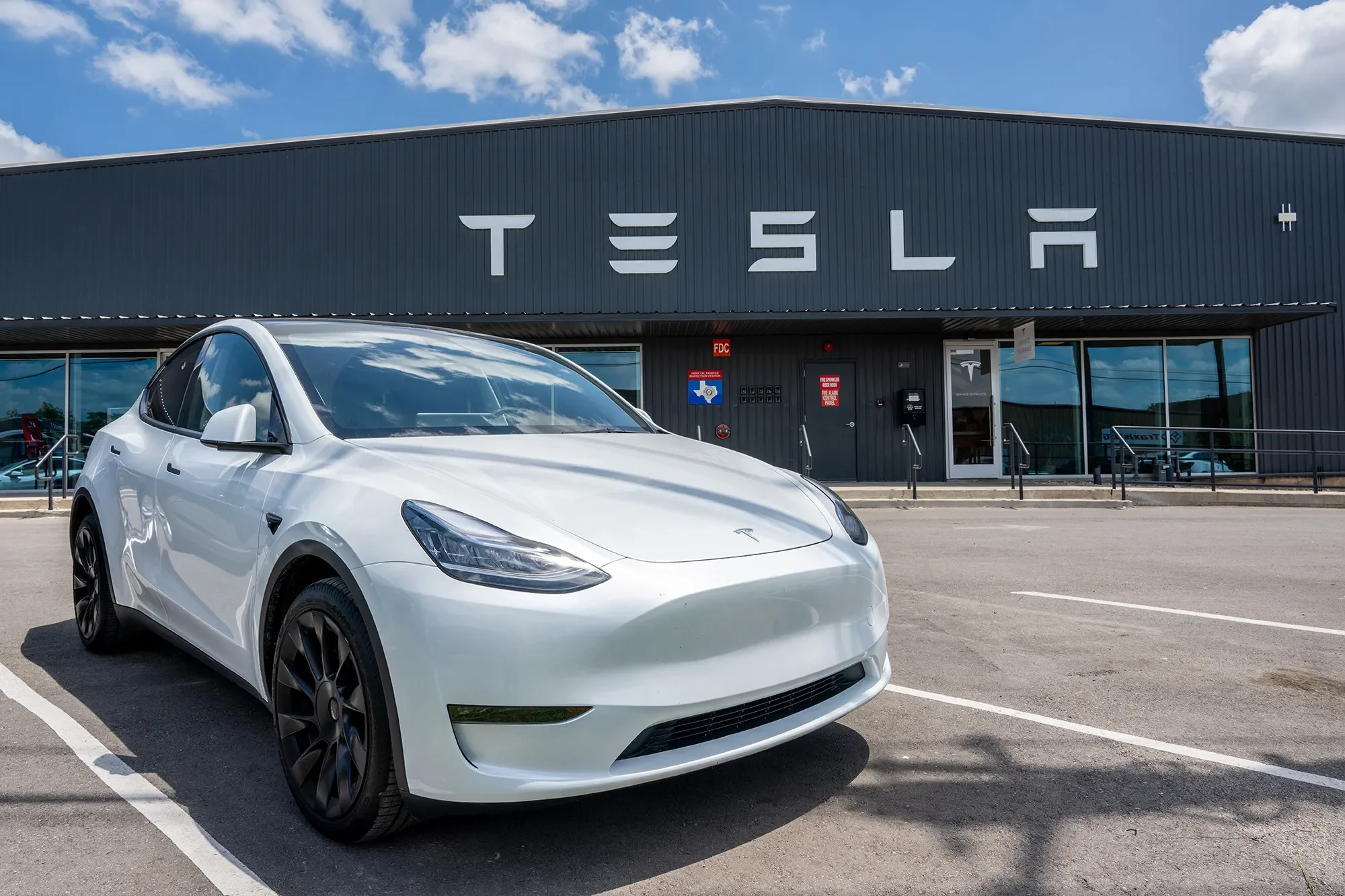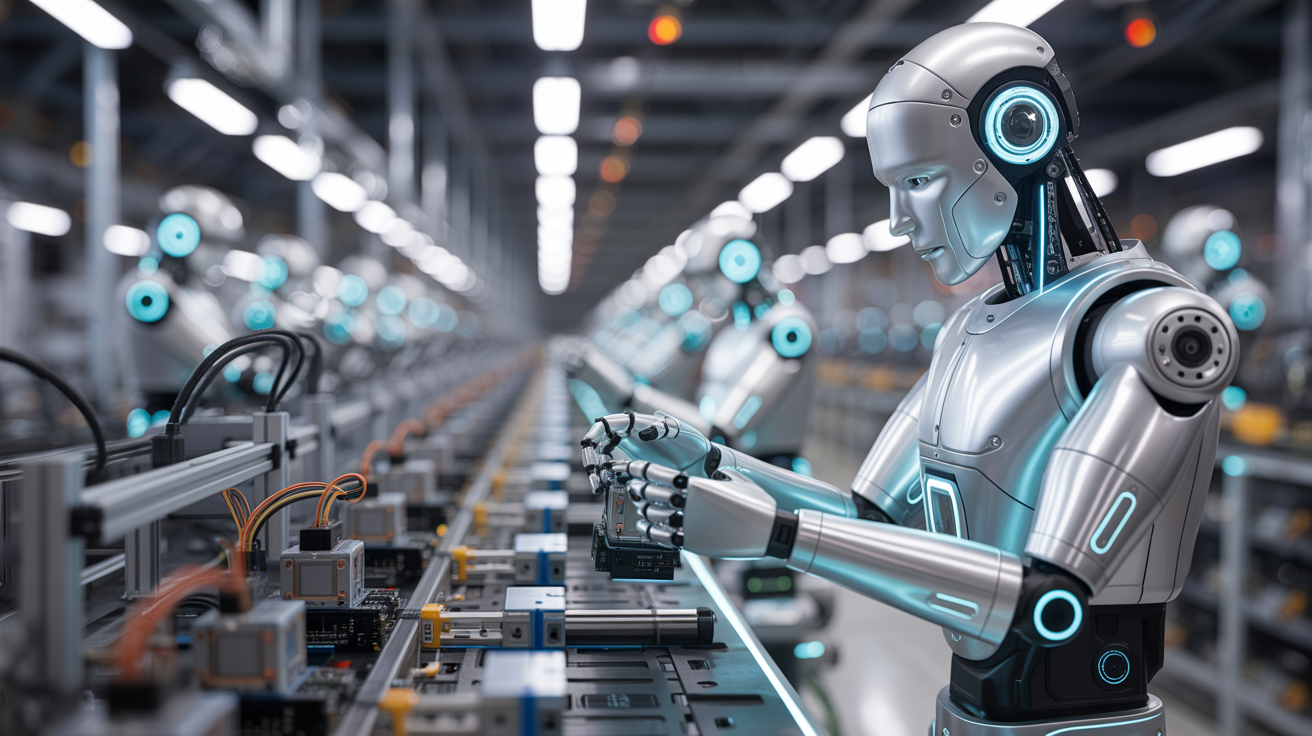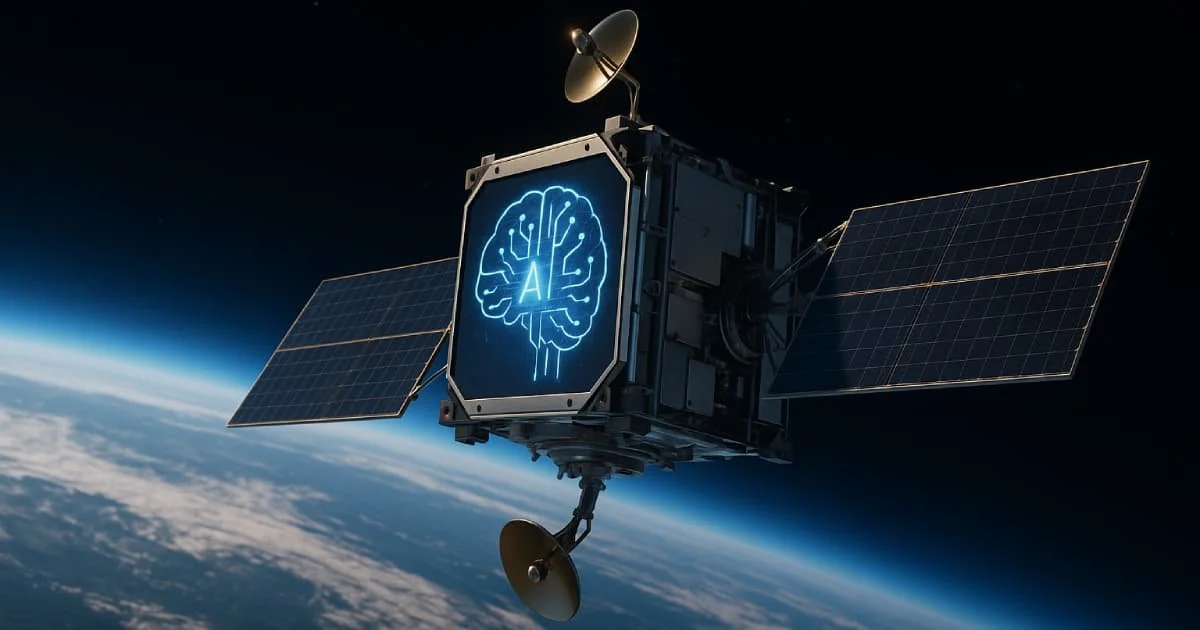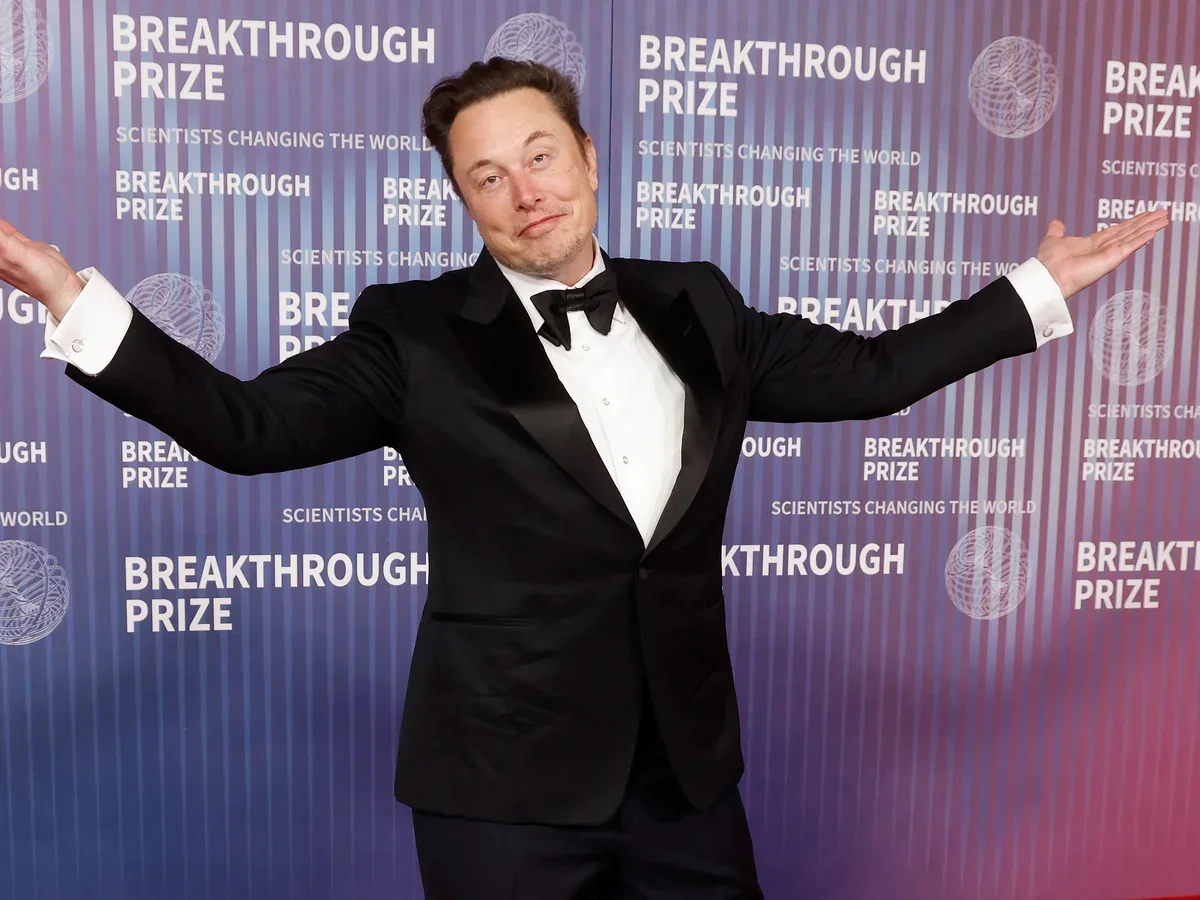Delaware's U-Turn: Musk's Massive Tesla Pay Package Back in Play
Restoring Billions and Reshaping Corporate Governance
Delaware's Supreme Court just flipped the script on one of the biggest executive pay battles in tech history, reinstating Elon Musk's 2018 Tesla compensation package worth around $56 billion. This ruling clears a major hurdle for Tesla's growth trajectory and signals a shift toward respecting shareholder votes in high-stakes deals.
Key Takeaways
Delaware Supreme Court overturned a lower court's decision to cancel Musk's 2018 Tesla pay package, reinstating the full $56 billion in stock options after Musk met all performance milestones.
The court emphasized that undoing the deal years after the work was done would be unfair, as shareholders had approved it twice through votes.
Lawyers who challenged the package received about $54 million in fees based on hours worked, far less than the billions in stock they sought.
This removes a long-standing uncertainty for Tesla investors, potentially stabilizing the stock and encouraging more aggressive innovation targets.
The decision critiques unpredictable judicial rulings in Delaware, which could stem the exodus of businesses from the state and restore its reputation as a predictable hub for incorporation.
The Tesla Tsunami: How Self-Driving Cars Are About to Upend Transportation Forever
Redefining Mobility in a World of Autonomous Machines
Tesla's full self-driving technology is reaching a tipping point, delivering flawless performance over long distances without human input. This isn't just incremental progress—it's setting the stage for a massive shift where cars become robots on wheels, slashing costs and reshaping how we move from place to place.
Key Takeaways
Tesla's supervised full self-driving software already handles hours-long trips without touching the wheel or pedals, normalizing what once felt like science fiction.
Unsupervised autonomy is imminent, enabling cars to operate without constant attention, similar to ongoing trials in select cities.
Steer-by-wire systems make it simple to remove traditional controls, paving the way for affordable vehicles that blend human and robotic driving.
At under 30 cents per mile, autonomous transport undercuts human-driven options, disrupting ride-hailing, taxis, and legacy automakers.
Urban areas, where most miles are driven, stand to benefit most from this tech, eliminating the hassle of traffic and distracted drivers.
Analyst upgrades reflect growing recognition of this potential, with stock targets climbing amid a 50% rise over six months.
Tesla's Autonomy Leap: Unlocking the Robotaxi Era
Revolutionizing Mobility with Safer, Smoother Self-Driving Tech
Tesla's stock has surged to record levels as the market recognizes the company's strides in autonomous driving. Recent software updates deliver performance that rivals or exceeds human drivers in safety and ride quality, paving the way for widespread Robotaxi deployment. This shift promises to flood cities with affordable, efficient autonomous vehicles, generating substantial profits while outpacing rivals.
Key Takeaways
Tesla's latest full self-driving software achieves safety levels comparable to or better than human drivers, based on extensive real-world testing and minimal incident reports.
Comfort in autonomous rides sets Tesla apart, with smooth handling of turns, accelerations, and intersections that mimic top human drivers.
Robotaxi networks can scale rapidly without safety drivers, starting in key areas like Austin and the Bay Area, thanks to regulatory-friendly safety profiles.
Manufacturing advantages allow Tesla to produce and deploy thousands of Robotaxis at low cost, undercutting competitors on fares and utilization.
Each Robotaxi could generate around $100,000 in annual profit through efficient operations, with costs as low as 60 cents per mile versus $2.50+ charges.
Broader AI applications from this tech extend to humanoid robots, amplifying Tesla's potential in automation.
Tesla's Robotaxi Leap: Driverless Rides Hit the Streets
Unleashing mass-scale autonomy that's cheaper, faster, and ready to dominate global roads.
Tesla has just unlocked a new era in autonomous vehicles by deploying Robotaxis in Austin, Texas, without any human supervisors on board. This milestone showcases how a standard production car, built at massive scale, can now handle full self-driving tasks using only cameras and AI—outstripping competitors in speed and cost efficiency. For tech enthusiasts, this signals a rapid shift toward widespread adoption, with profound effects on manufacturing, ridesharing, and daily mobility.
Key Takeaways
Tesla's Model Y, a mass-produced vehicle costing around $30,000 to build, now operates as a fully autonomous Robotaxi without human intervention.
Deployment happened in Austin just months after the app's launch, far quicker than competitors who took years to reach similar unsupervised operations.
Tesla's camera-only AI system contrasts with rivals' complex sensor arrays, enabling faster scaling to millions of units annually.
This tech extends beyond Robotaxis to personal vehicles, potentially making Tesla the default choice for buyers seeking hands-off driving.
Broader implications include labor disruptions in driving and manual work, as the same AI powers upcoming humanoid robots.
The AI Tsunami: Why Tesla's Robot Economy Could Be Your Lifeline
Preparing for a World Where AI Redefines Work and Wealth
The surge of artificial intelligence promises unprecedented efficiency and scale, but it also threatens widespread job displacement across industries. Yet, by investing in the companies leading this charge, everyday people can turn potential upheaval into personal opportunity—positioning themselves to benefit from the very technologies reshaping society.
Key Takeaways
AI-driven companies are set to generate trillions in value by optimizing transportation, labor, and energy systems.
Tesla stands out as a key player, targeting massive markets through Robotaxis, humanoid robots, and energy storage.
Owning shares in disruptors like Tesla could create passive income streams that offset job losses from automation.
Expect significant profits from Robotaxis alone, potentially reaching hundreds of billions annually at scale.
Humanoid robots could capture portions of the global labor market, operating at costs far below human wages.
Energy solutions like battery storage are already high-margin and poised for explosive growth in an AI-powered world.
Risks include leadership dependencies, regulatory hurdles, execution delays, and competition, but Tesla's integrated approach gives it a unique edge.
Why Optimism Wins: The Secret to Building Wealth in Tech's Future
Unlock Massive Returns by Betting on Breakthroughs
Optimism drives successful tech investing by enabling bets on innovations that reshape industries, from electric vehicles to AI systems. Pessimism, focused solely on risks, leads to missed opportunities in high-growth sectors.
Key Takeaways
Optimism allows investors to acknowledge real risks while still seeing potential for massive upsides in emerging technologies.
Pessimists often highlight valid challenges but assign zero probability to success, paralyzing action and excluding them from wealth-building.
Historical tech revolutions, like the internet and smartphones, rewarded optimists who believed in progress despite obstacles.
In AI, robotics, and autonomy, optimism positions investors to capture transformations in labor, transportation, and knowledge work.
Reality favors optimists, as human ingenuity consistently solves problems and improves standards of living over time.
Choosing optimism means participating in the future, taking calculated risks, and adjusting based on evidence.
SpaceX's Sky-High Ambitions: The Dawn of a Trillion-Dollar Era
Revolutionizing Space Tech and Unlocking AI's Infinite Potential Through Massive Rockets and Orbital Data Centers
SpaceX stands on the brink of transforming not just space travel but the entire landscape of AI and computing. With a potential IPO in 2026 poised to shatter records, the company's trajectory highlights how reusable rockets and space-based AI could solve Earth's energy crises while creating unprecedented investment opportunities in private tech.
Key Takeaways
SpaceX's valuation has nearly doubled annually since 2002, reaching $350 billion in 2024 and potentially hitting $500-800 billion by 2025, driven by Starlink and emerging AI applications in space.
Starship's reusability and massive payload capacity—up to 400 tons to orbit—will slash launch costs dramatically, enabling frequent missions and making space accessible for new industries.
Solar-powered AI satellites in sun-synchronous orbits offer constant energy and efficient heat dissipation, bypassing earthly power bottlenecks for data centers and inference computing.
Investing in private companies like SpaceX requires a rigorous process evaluating market size, team capability, execution risks, and capital needs, with high rewards offsetting potential failures.
Competitors in satellite communications and AI will rely on SpaceX launches, reinforcing its dominance while fostering an open ecosystem for space innovation.
Blue Origin and Chinese rivals are advancing reusable tech, but lag behind Starship's scale and efficiency, setting up a duopoly in global launches.
AI Heads to Orbit: Building Data Centers Beyond Earth's Limits
Why space could become the new home for AI's insatiable hunger for power and cooling, unlocking exponential growth in inference and beyond.
Space-based computing is emerging as a game-changer for AI's expansion. With earthly data centers hitting walls on energy availability and water for cooling, shifting operations to orbit taps into unlimited solar power and natural vacuum cooling. This approach not only sidesteps terrestrial bottlenecks but also paves the way for massive scaling in AI inference, where demand is skyrocketing as models become everyday tools.
Key Takeaways
Space offers unlimited, low-cost solar energy without the need for batteries or land permits, producing eight times more power per solar panel than on Earth.
Cooling in space relies on radiating heat into the void, eliminating the massive water consumption that plagues ground-based data centers.
Initial focus will be on AI inference tasks, like generating images or running chatbots, which can operate on isolated nodes rather than massive interconnected clusters needed for training.
Over the next decade, inference compute could dominate AI energy use, potentially doubling every six to twelve months, far outpacing training demands.
Challenges like radiation hardening and deployable radiators are being solved through innovative engineering, making space viable for high-power chips.
Launch costs are plummeting with reusable rockets, enabling terawatts of orbital compute capacity without the constraints of Earth's grid or politics.
By 2035, space might host a small but growing share of new data centers, with full-scale adoption potentially reaching meaningful levels by 2050.
The Dawn of Optional Work: AI, Robots, and Humanity's Next Leap
Redefining Existence in a World of Infinite Possibility
The rapid evolution of AI and robotics is set to transform society, making traditional jobs optional while pushing humanity toward multi-planetary sustainability. At the core lies a vision where technology ensures abundance, but challenges like population decline threaten long-term progress.
Key Takeaways
AI and robotics advancements could make working optional within 10-20 years, turning jobs into hobbies much like gardening today.
Becoming a multi-planetary species ranks among the top evolutionary milestones, ensuring redundancy against planetary catastrophes.
Future economies may shift to universal high income, where competition focuses on relative status rather than survival needs.
Population decline poses a risk to expanding human consciousness, as more people increase the chances of unlocking universal truths.
Leadership in tech involves building trusted teams that act as extensions of visionary minds, enabling massive scale in projects like rockets and robots.
Early Mars settlements will be harsh and dangerous, akin to historical frontiers, requiring mission-driven pioneers.
Orbiting AI: Revolutionizing Compute from Space
Why Space Could Power the AI Boom and Beyond
Advancements in launch tech are making orbital data centers a reality, promising near-unlimited solar energy for AI training and inference. This could cut electricity costs by up to 90% compared to ground-based systems, while global rollouts of autonomous tech accelerate mobility worldwide. Yet, these shifts demand new economic models to handle falling costs and rising disruptions in energy and jobs.
Key Takeaways
Space-based AI clusters leverage constant sunlight, reducing reliance on batteries and slashing operational costs for compute-intensive tasks.
Launch vehicles like Starship enable massive payloads to sun-synchronous orbits, though challenges in sites and reusability persist.
Autonomous ride-hailing apps are expanding to over a dozen countries, signaling faster adoption in regions with flexible regulations.
Energy could emerge as a universal value measure, with kilowatt-hours trading like currency to fuel AI and electric ecosystems.
Reversing inflation through tech abundance in essentials like food and housing could redistribute wealth, but requires proactive adaptation.
Tesla's Secret Weapon: Turning Cars into the World's Largest AI Network
Revolutionizing Compute Power Through Idle Vehicles and Satellite Connectivity
Imagine a future where millions of electric cars, sitting idle in garages worldwide, form the backbone of a massive AI processing empire. This isn't science fiction—it's a strategic pivot that could redefine computing infrastructure, leveraging existing hardware in ways the market hasn't priced in yet.
Key Takeaways
Tesla's vehicle fleet could evolve into a distributed AI inference system, harnessing unused computing power from parked cars to create a network rivaling major data centers.
With projections of 100 million vehicles, each contributing around a kilowatt of inference capability, this setup might deliver up to 100 gigawatts of compute—equivalent to a significant portion of U.S. power consumption.
Built-in power and cooling systems in electric vehicles solve key data center challenges, making this approach cost-effective and scalable.
Data transfer bottlenecks via traditional Wi-Fi or cellular networks hinder viability, but satellite-based internet offers high-bandwidth, low-latency solutions for seamless coordination.
Integration of satellite tech could enable consistent global connectivity, turning theoretical potential into practical reality for AI workloads.
Challenges include workload allocation, owner incentives, security, and focusing on inference tasks that suit distributed environments over centralized training.
Tesla's Self-Driving Leap: Conquering Roads Worldwide
Why FSD's Rapid Progress Signals a Transportation Overhaul
Tesla's Full Self-Driving software has reached a stage where it handles 99% of miles autonomously in diverse conditions, from snowy terrains to narrow European streets. This breakthrough points to a future where robotaxis scale globally, potentially transforming economies through safer, cheaper mobility—yet regulatory hurdles could force creative solutions like adding steering wheels to cyber cabs.
Key Takeaways
Tesla's FSD software now operates reliably in challenging environments like snow and European roads, demonstrating its adaptability beyond U.S. cities.
Global rollout of the Tesla app opens doors for wider adoption, signaling preparations for robotaxi services in countries outside the U.S.
Regulatory landscapes vary worldwide, with potential for nations like Indonesia or the UAE to approve robotaxis faster than fragmented U.S. states, accelerating Tesla's expansion.
Waymo's geofenced approach limits scalability to thousands of vehicles annually, while Tesla's vision-based system aims for millions, creating a competitive edge.
Outdated mapping remains a minor issue, but upcoming updates will incorporate more human-like logic to override such limitations.
Self-driving tech promises massive safety gains and cost reductions in transportation, outweighing concerns around privacy and control.
If global approvals align with production capacity, Tesla could deploy millions of cyber cabs, leading to trillions in market value through profitable robotaxi networks.
The Car Market Collapse: Why Buying Now Could Cost You $72,000
Brace for the Autonomy Shockwave That's About to Crush Vehicle Values
The rapid rollout of unsupervised full self-driving technology stands poised to slash transportation costs by up to two-thirds, making personal car ownership obsolete in many areas and triggering a massive drop in used car prices. For anyone eyeing a new vehicle, the math points to staggering opportunity costs—potentially turning a $40,000 purchase into an $8,000 asset in just four years while missing out on investments that could double that money.
Key Takeaways
Unsupervised autonomous driving approval could arrive in major U.S. markets within 12-18 months, fundamentally shifting car ownership from essential to optional.
Current average new car costs around $48,000, with typical depreciation hitting 60% in four years—but autonomy could double that loss to 80% or more in disrupted markets.
Robotaxis aim for 25-30 cents per mile operating costs, undercutting personal vehicle ownership's 70-80 cents per mile and saving users $10,000 annually.
Leasing transfers depreciation risk to lenders, making it a smarter short-term play than buying outright amid uncertainty.
Rural or specialized needs (like work trucks or large families) justify purchases, but urban commuters face the biggest risks.
Investing saved funds in AI and autonomy-related stocks could yield 15% annual growth, turning $40,000 into $80,000 over four years—a $72,000 swing versus car depreciation.
Watch Austin's used car market post-Texas FSD approval as an early indicator of nationwide impacts.
Neuralink's Leap: From Sci-Fi to Everyday Reality
Unlocking Human Potential Through Brain-Machine Fusion
Neuralink is pushing boundaries in brain-computer interfaces, turning paralysis into possibility and aiming for full brain connectivity. With rapid advancements in implants, robotics, and decoding, the tech promises to restore lost functions and enhance cognition, all while scaling to help thousands.
Key Takeaways
Neuralink's first product enables quadriplegic users to control devices like computers and phones purely through thought, with average daily usage reaching eight hours.
The company has implanted devices in 13 people as of late 2024, focusing initially on spinal cord injuries and ALS, with plans to expand to restoring sensation, speech, and vision.
Surgical robots insert ultra-thin threads into the brain, avoiding blood vessels, with future versions targeting faster, more reliable procedures under one hour.
Implants feature 1,000 channels for neural recording, wireless charging, and data compression to transmit signals via Bluetooth, but scaling to higher channel counts demands innovations in power, packaging, and compression.
Decoding algorithms convert brain spikes into actions like cursor movement in 15-20 minutes of calibration, though ongoing drift requires robust, self-adapting ML models.
Long-term vision includes whole-brain interfaces for treating psychiatric disorders, augmenting abilities, and exploring the brain's inner workings, backed by vertical integration from chip design to manufacturing.
Tesla's Robotaxi Revolution: Why Scale Will Eclipse Waymo's Lead
The Battle for Autonomous Mobility Heats Up as Tesla's Generalized AI Approach Poised to Redefine the Industry
Tesla's strategy in autonomous vehicles centers on building from the ground up with minimal hardware, aiming for massive scale that could rapidly outpace competitors focused on high-cost, region-specific systems. This shift promises not just safer rides but a complete transformation in urban transportation economics.
Key Takeaways
Tesla prioritizes low-cost hardware like eight cameras to enable widespread deployment, contrasting with competitors' reliance on complex sensors and mapping.
While some players lead in current driverless operations across multiple markets, Tesla's focus on generalized AI could allow instant scaling without geographic limits.
Successful validation of Tesla's safety levels could turn its manufacturing dominance into an unbeatable edge in robotaxis.
Current rollouts emphasize safety and data collection, with acceleration in regions and fleet size as key indicators of progress.
Pricing strategies signal a push toward the lowest cost per mile, leveraging scale for long-term profitability once demand surges.
The Drone Revolution: AI's Grip on Tomorrow's Battlefields
Why Autonomous Tech Isn't Sci-Fi Anymore—And How It Shapes Global Power
The landscape of warfare is shifting faster than ever, driven by advances in drones and artificial intelligence. At the core are breakthroughs that make machines not just tools, but decisive forces on the battlefield. Key insights reveal how production scales, human limits, and space-based systems could determine winners in future conflicts, urging a rethink of defense strategies now.
Key Takeaways
Drones and AI dominate modern warfare, as seen in ongoing conflicts where volume and autonomy outpace human involvement.
Localized AI in drones enables independent decision-making, raising risks of unchecked escalation if not managed carefully.
Human soldiers face increasing dangers at the front lines due to precision tech like computer-guided snipers, pushing toward drone-only engagements.
Scaling drone production is critical; superior kill ratios mean little without overwhelming numbers to counter adversaries.
Space communications and positioning systems provide unbreakable advantages, essential for coordinating drones and maintaining operations.
Neural interfaces could bridge human cognition with AI, boosting bandwidth for control and mitigating risks of AI surpassing human oversight.
Innovation stems from first-principles thinking: question requirements, delete unnecessary elements, optimize wisely, and accelerate processes.
Leadership in tech demands hands-on expertise; leaders must understand the engineering to evaluate teams and drive progress effectively.
Curiosity drives success—broad learning across fields fosters cross-pollination of ideas for breakthrough solutions.
Tesla's Robot Revolution: Unlocking Superhuman Potential
Redefining Productivity Through AI and Automation
The push toward advanced robotics and AI is transforming everyday tasks, medical care, and global manufacturing, setting the stage for an era where technology delivers abundance for all.
Key Takeaways
Advanced humanoid robots with precise hands enable complex tasks like surgery, construction, and music, promising widespread access to elite skills.
Neural implants combined with robotic bodies could restore mobility to those with severe disabilities, offering cyborg-level abilities at affordable costs.
Real-time data from massive social networks fuels superior AI models, accelerating progress toward general intelligence.
Massive compute power, like data centers with hundreds of thousands of GPUs, outpaces competitors in training next-generation AI.
Manufacturing breakthroughs aim to produce vehicles every five seconds, driven by physics-inspired efficiency in factories.
Self-driving technology has reached a tipping point, enabling rapid expansion in vehicle production.
Tesla's Drone Revolution: Partnering with SpaceX to Dominate the Skies
Why This Could Be the Next Big Leap in Autonomous Tech and National Security
Tesla stands on the brink of transforming the commercial drone market by leveraging its battery expertise and teaming up with SpaceX for advanced materials and aerodynamics. This move could challenge China's dominance, boost U.S. security, and pave the way for flying vehicles.
Key Takeaways
Tesla's low-cost, high-density batteries give drones longer flight times and better efficiency than competitors.
SpaceX's lightweight materials and aerodynamic designs from rockets can create stronger, lighter drone frames and propellers.
Tesla's electric motor production scales easily to drones, enabling high-torque, reliable performance at lower costs.
Integrating Tesla's full self-driving AI allows for fully autonomous drones that navigate complex environments without human input.
Entering the drone market addresses China's control over commercial drones, reducing national security risks for U.S. businesses and governments.
Drones serve as a low-risk testing ground for electric vertical takeoff and landing vehicles, accelerating urban air mobility.
AI Satellites: Unlocking Infinite Compute in Space
Why solar-powered AI systems orbiting Earth could outpace ground-based tech by orders of magnitude—and soon.
The push for advanced AI demands unprecedented levels of energy and cooling, but Earth's resources hit hard limits quickly. Shifting compute to space taps into the sun's vast output, eliminates cooling overhead, and enables scales impossible on the planet. This shift promises terawatt-level AI capabilities, reshaping industries from drug discovery to climate modeling.
Key Takeaways
Earth's energy infrastructure caps AI growth at hundreds of gigawatts, far below the terawatts needed for next-level systems.
Space offers continuous solar power without batteries, using lightweight panels that achieve 100% capacity factor.
Radiative cooling in space eliminates bulky refrigeration, making AI hardware far more efficient and cost-effective.
Projections point to space-based AI becoming cheaper than Earth-based within four to five years.
This technology demands massive launch capacity, boosting reusable rockets and satellite networks.
Geopolitical control over space AI could define global tech leadership for decades.
Elon Musk's Bureaucracy Roast: How Overregulation Stifles Innovation
Unraveling the Absurd Hurdles Facing Space Tech and Beyond
Government red tape isn't just annoying—it's a massive barrier to progress in fields like space exploration. Recent stories highlight ridiculous requirements, from analyzing shark collision risks to fines for spilling water, all while tech pioneers push boundaries. These insights reveal how outdated systems slow down ambitious projects and what it means for the future of innovation.
Key Takeaways
Overly cautious environmental studies for rocket launches, like assessing impacts on sharks and whales, delay critical advancements in space travel despite minimal actual risks.
Fines for minor actions, such as dumping clean water to cool launch pads, show how regulations ignore context in high-rainfall areas.
Early internet pioneers often started companies out of necessity when traditional job paths failed, leading to breakthroughs like the first online maps and directories.
Media outlets frequently echo identical talking points, raising questions about coordination and reducing public trust in reporting.
Government expansion risks inefficiency, akin to scaling up slow bureaucratic agencies without improving outcomes.
Persistent issues like chronic back pain represent untapped opportunities for tech to boost quality of life.
Free speech advocates face escalating threats, including media labeling and security concerns, underscoring the need for robust protections.
Political leadership often appears scripted, with breakdowns revealing potential influences from unelected power brokers.
Overlaps between high-profile scandals and political figures suggest hidden networks shaping decisions.




















